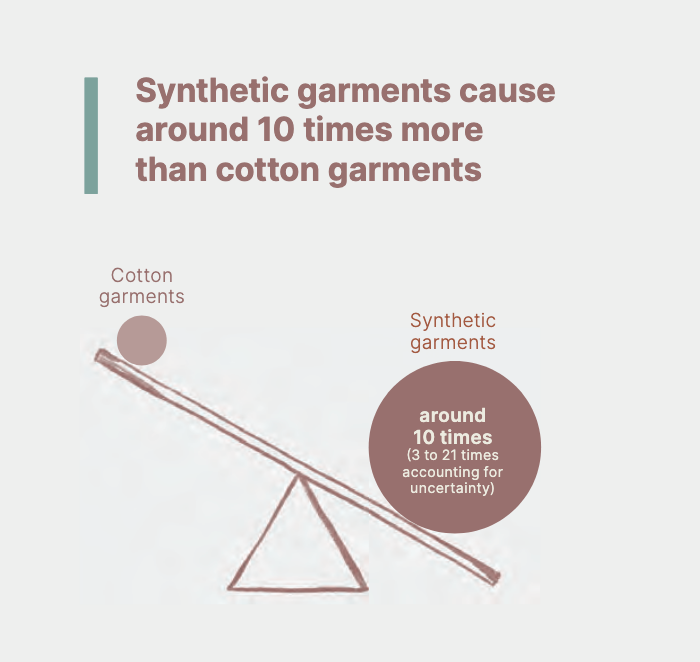Cotton FAQ
- David Connolly

- Sep 14, 2021
- 4 min read
Cotton is a familiar textile, but how well do you know the facts about this versatile crop? Get the answers to common questions about cotton.
We provide extensive citations for these facts, and all content on this page and all pages on CottonToday have been reviewed for accuracy by the United States Department of Agriculture (USDA).
Is cotton completely biodegradable? How long does it take for it to completely biodegrade?
There is a growing body of evidence showing that cotton biodegrades in most natural environments. In wastewater, soil, fresh water, and saltwater conditions, cotton microfibers biodegrade readily while polyester microfibers are persistent and do not readily degrade. How long it takes for cotton to biodegrade depends on the conditions in the surrounding environment – including factors such as temperature, presence of microorganisms and more. Read more here.
Which is more energy efficient, growing or recycling cotton?
Growing cotton can provide energy. When considering the energy stored in cottonseed, cotton actually produces more net energy than is required to grow it. Cottonseed oil can be processed and used for biodiesel, and unprocessed cottonseeds can be fed to animals as an important nutritional energy source. Therefore, the cotton production process is a net energy provider.1
100% of cotton textiles can be recycled into textiles or other materials.2 How energy efficient this process is depends on the quality of sorting, the type of material, the equipment used and the resulting product. Growing and recycling cotton are both important processes, and researchers are constantly looking for ways to improve how they are managed. Read more here.
What happens to the rest of the cotton plant once cotton is harvested?
In addition to using cotton for fabric production, the cotton plant also produces cottonseed, cottonseed oil and cotton linters. Cotton is an “and” crop – meaning the same cotton harvested for fiber is also used in hundreds of other products.
Cottonseed oil is used in a wide variety of products from salad dressing to makeup to toothpaste, and cottonseed can feed dairy cattle.3 Cotton linters, the tiny fuzz left on cottonseed hulls, are a renewable form of cellulose. Linters are commonly used to make products like paper, but it can also be found in food products such as ice cream and beer. Read more here.
What do cotton growers do to maintain biodiversity and wildlife habitats?
Cotton and the environment benefit from a diverse range of wildlife habitats. Cotton growers enjoy and understand the importance of biodiversity, which is why land that is no longer efficient for cotton production can be turned into habitats for birds such as pheasant and quail, pollinators and other species. Read more here.
What is the difference between conventional and organic cotton?
The distinction between organic and conventional cotton can often be misunderstood or misconstrued in sustainability conversations. In reality, growing practices are remarkably similar. The big differences come down to where the seeds come from, and which chemicals are used to grow and protect the crops. When they are produced responsibly, both organic and conventional cotton can be grown with lower environmental impacts. But neither is inherently more sustainable than the other as growing conditions and on farm practices are the key drivers of sustainably. Read more here.
Does cotton use a lot of pesticides?
Pesticides protect crops from weeds, insects and diseases. Rather than broadly applying large amounts of pesticides to crops, many cotton growers have advanced their approach to using integrated pest management. When applying an integrated approach, growers carefully select the right pesticide for the right pests on the right crop, only when and where necessary, and in the lowest possible rates suggested by the pesticide label, which also takes into account efficacy, potential for pest resistance and the environment. Countless improvements have been seen for pesticide use in recent years – cotton growers in the United States today for example make 50% fewer insecticide applications than the generation before them. Read more here.
Does cotton need a lot of fertilizer?
In addition to carbon dioxide, water and sunlight, all plants need mineral nutrients to grow. The primary nutrients needed are nitrogen, phosphorus and potassium, though other secondary and micronutrients are also essential. There are various methods to meet cotton’s nutrient needs, including the use of nitrogen-fixing cover crops, manures and soluble fertilizers. Applying fertilizer to crops encourages growth and optimizes yields. When used in the right way, fertilizers can help growers produce the same amount of raw material using less water on less land. However, too much nitrogen fertilization does not help the plant and may harm the environment while making the farm less profitable. Cotton growers are therefore very conscious about how much fertilizer they apply. Read more about fertilizers here.
Does cotton use a lot of water?
Cotton, like all plants, needs water to grow. Most of the water used to produce cotton is naturally occurring from rainfall. Cotton growers strive to use water responsibly in their fields, using techniques like no-till farming and advanced irrigation systems to optimize water use. With just one acre-inch of rain, modern cotton varieties tend to yield at least 50 pounds of lint and 75 pounds of seed, enough to make more than 170 t-shirts and feed more than 10 cows! Read more here.
Does cotton use a lot of land?
Over the past 50 years, cotton yields have been increasing, while the amount of land used to produce cotton has shrunk by 50 percent.5,6 Land gains have been made possible because of higher-yielding cotton varieties and modern agriculture farming practices. Read more about land here.




Comments